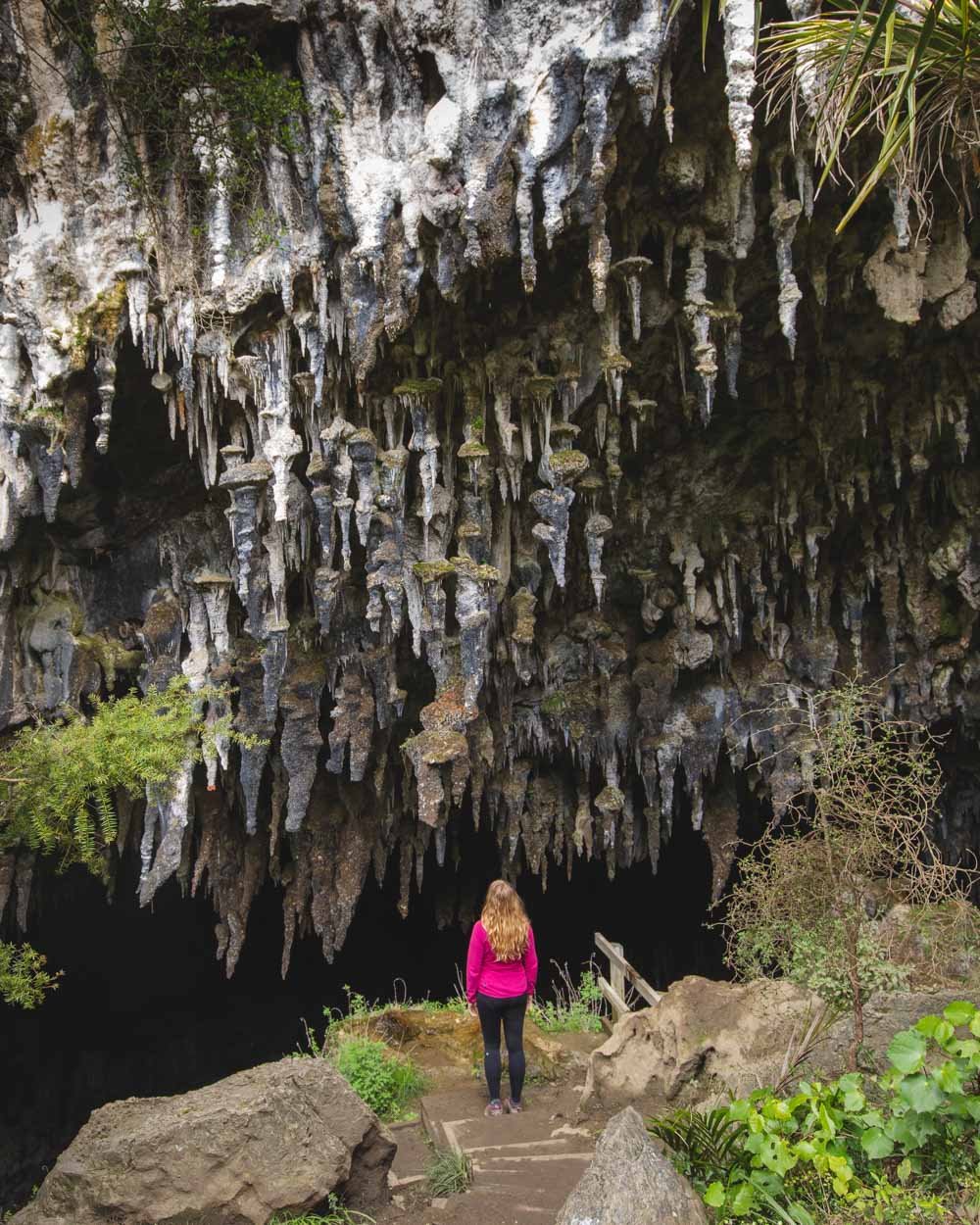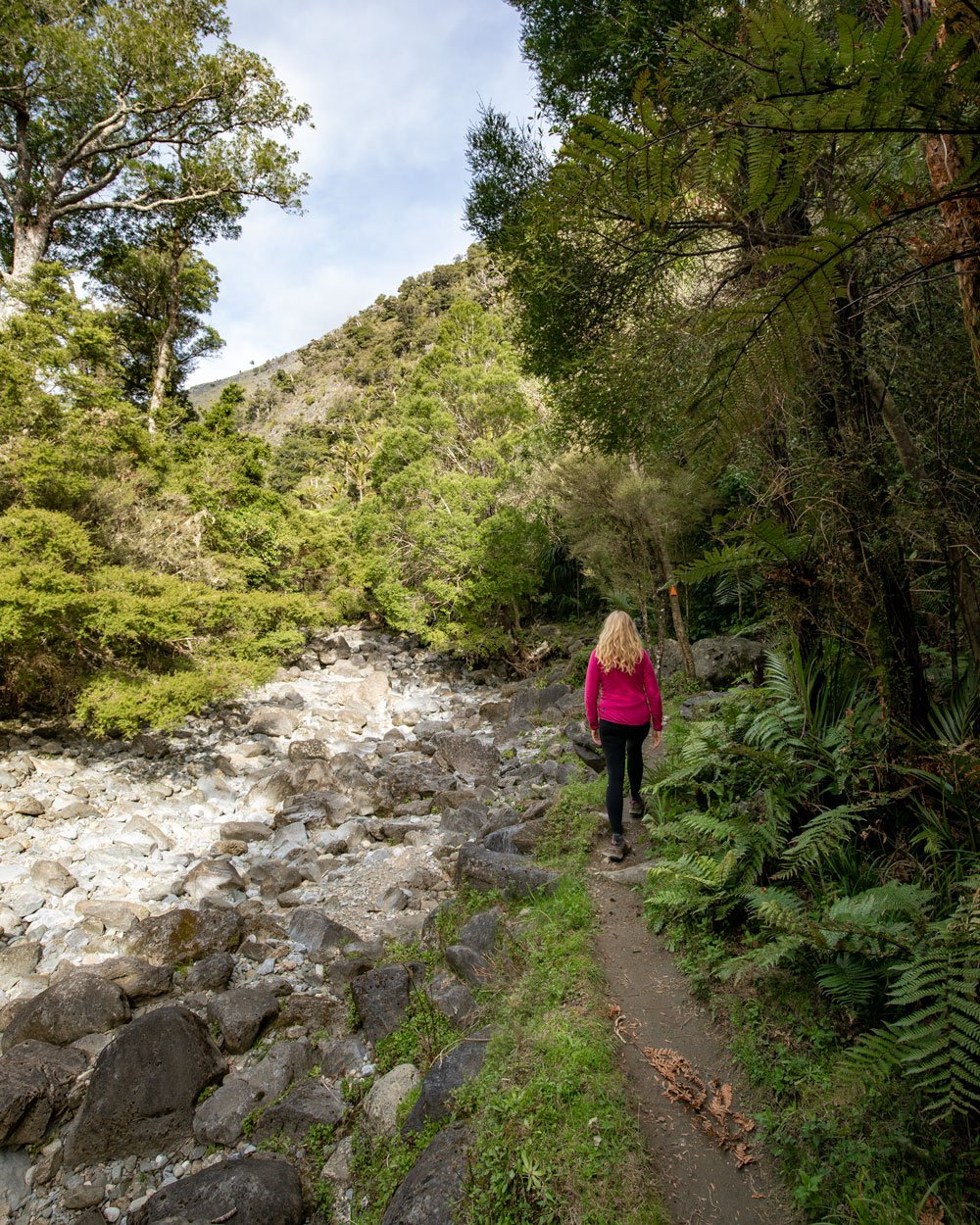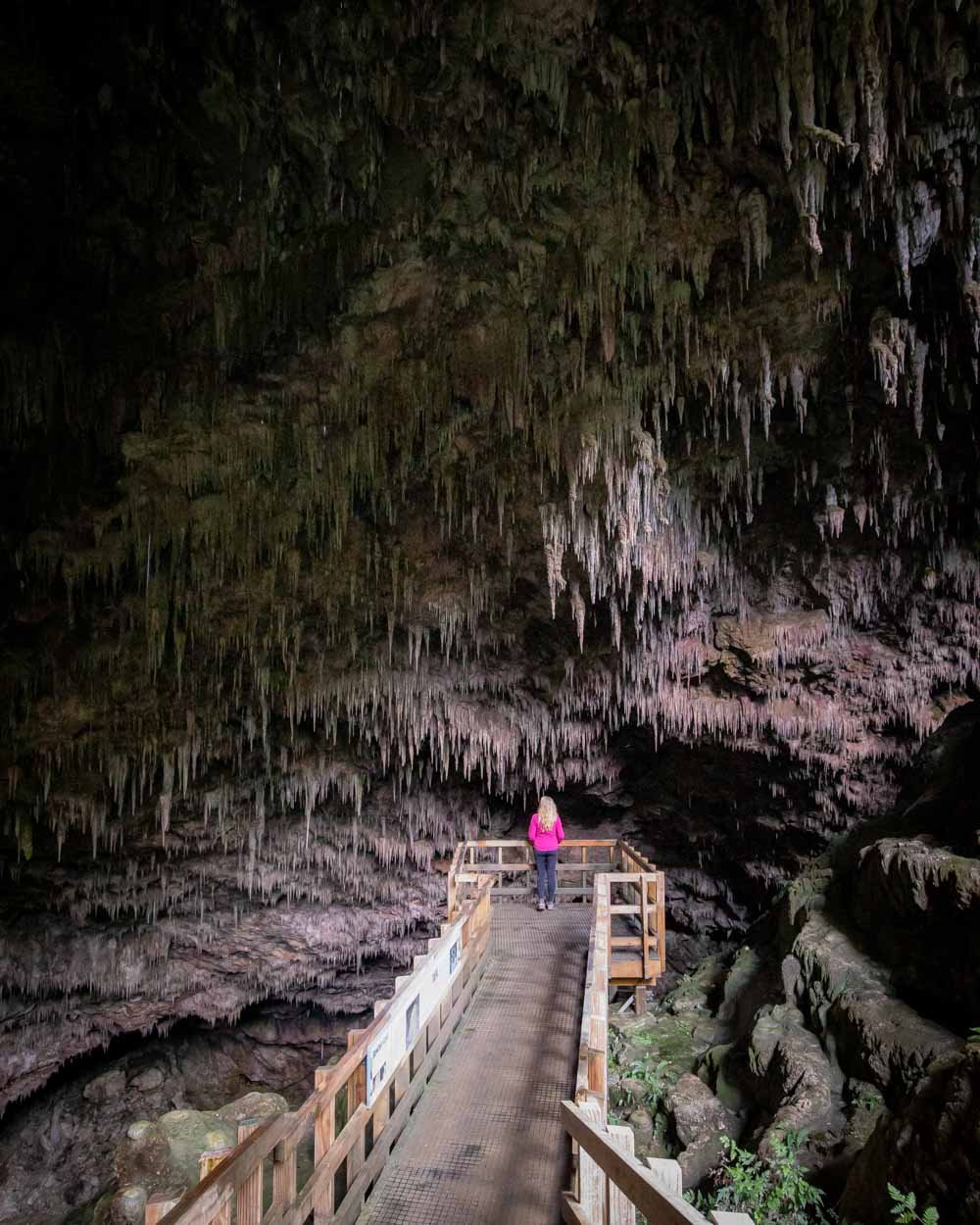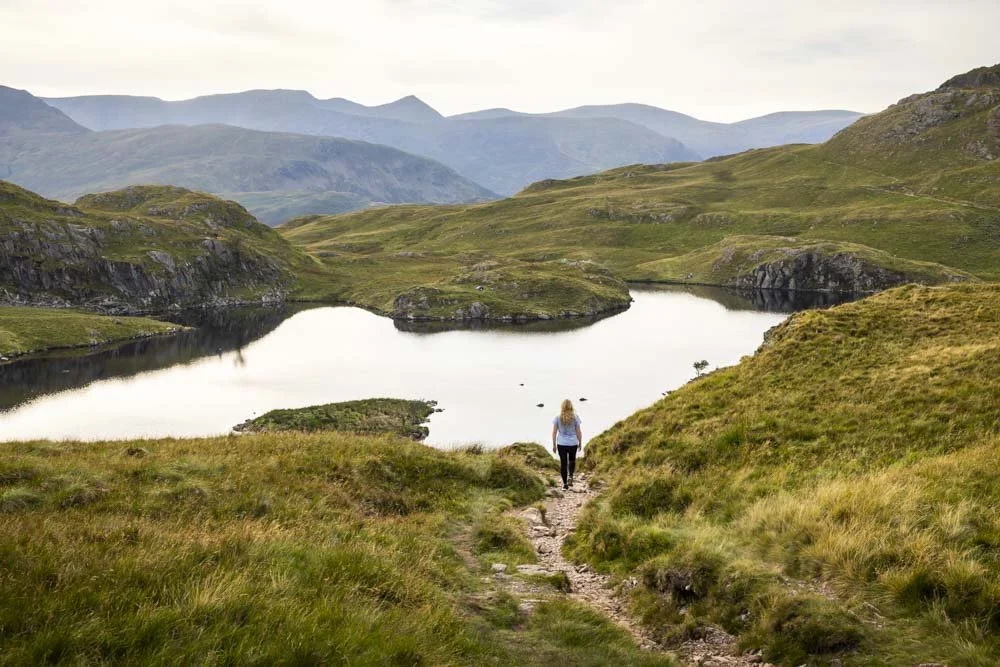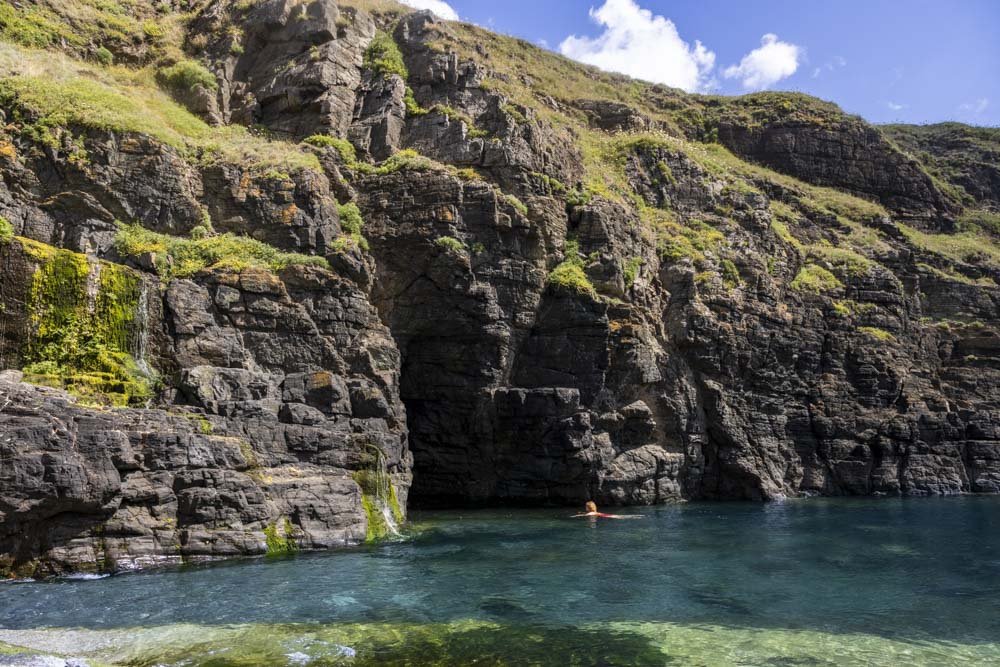The remarkable Rawhiti Cave has to be one of the South Island’s best hidden gems. If Disney were to create a fairy-tale cave full of mythical creatures, I’m sure it would look something like Rawhiti. As a bit of a lifelong cave fan, I’ve visited dozens and dozens of caves and never seen anything even close to this one.
The extraordinary cave is home to thousands of stalactites, which grow outwards towards the sunlight due to a phenomenon known as phytokarst (more on that later). Not only are the stalactites unusual in shape, but they’re also unusual in colour, with many being a salmon pink. It’s the sort of place that leaves you slack jawed and staring in wonder.
Here’s everything you need to know about visiting Rawhiti Cave.
Rawhiti Cave
The stats
Distance: 1.7km each way
Elevation gained: 200m
Difficulty: Moderate
The walk to Rawhiti Cave is not overly steep, but the last third of the trail is quite narrow and rocky. When wet it can become slippery (more on the descent than the ascent). The very final section into the cave itself becomes very muddy after heavy rain. Take it slowly though and with decent shoes you shouldn’t have too much trouble.
The trail was slightly shorter than the trail sign indicated and quicker too, it took us 40 minutes to get there and less to get back.
Starting the trail: following the riverbed
The walk begins by heading through the gate and into a small patch of forest, before crossing over the dry river bed; incidentally, if there is water in the river you shouldn’t cross as it can be dangerous due to flash flooding.
The vast majority of the time it will be bone dry and just requires walking over the smooth stones which takes less than a minute.
You will then walk along a narrow trail alongside the dry river and in and out of some pretty sections of forest, with lots of lush vegetation including picturesque nikau palms.
The first kilometre is almost entirely flat with just the odd couple of rocks to climb over as you make your way towards the cave. The scenery is dramatic with towering cliff walls that leave you feeling small.
It was full of birdlife and we were delighted to see a small family of weka, with lots of little fluffy chicks which was a first for us.
After 1km you will come to a warning sign for the cave and from here the track conditions change.
The climb to Rawhiti Cave
From the signpost the track begins to climb on a narrow dirt path. There are rocks and tree roots to watch for as well as patches of smooth dirt, which can become slick when wet. I found that the trail looked worse than it was - on the way up it was pretty grippy in all but one or two short sections.
I never felt it to be slippery and just watched my footing carefully, but I stress that the track was dry for the most part and would be different when wet. There are sometimes large footholds indented in the path which looked really slick, but were actually very helpful and made the climb much easier.
After 350m you’ll reach a length of rope tied to the tree which is nice to have rather than need to have, I didn’t use it on the way up but held it on the way down, more for peace of mind.
Although it had been raining the day before we did this hike, it hadn’t rained that day. If there’s been heavy rain that rope would come into its own!
After the rope you have a few switchbacks on better trail and then it deteriorates a bit again. There is one bit where it’s quite steep and there isn’t much grip.
There are however some great sturdy tree branches you can grab to steady yourself, again this is more on the way down than the way up.
After 750m of climbing uphill from the warning sign you will reach the top of the cave entrance. Your first sight of the mouth of the cave - which is one of the largest in New Zealand - is truly jaw dropping.
Even Joe who is not a cave fan thought it was amazing! The cave is thought to be a million years old, but could be even older.
Entering Rawhiti Cave
The entrance showcases huge numbers of the unusual stalactites and the effect is other-worldly. The atmosphere is incredible and it’s only heightened by the fact that there’s no sound other than that of water dripping from the cave ceiling.
It’s eerily beautiful and we were very grateful to get this mystical spot to ourselves.
Unfortunately descending the stairs to the cave (which is just 30m) was for us, the worst bit of the whole trail. You’d think it would be easy as there are now staircases, but there isn’t much gravel and the mud was super slippery.
You could manage taking it slowly on the stairs, but there is one spot of maybe five or six steps where there aren’t any stairs and it is more like a mud slide.
There’s isn’t really anything to grab onto so you just have to go slow. It would be fine in very dry conditions though, so you might luck out. Even if not, it’s worth taking those six pigeon steps to re-join the stairs and get further into the cave.
The last staircase has more gravel and is fine and then you’ll be standing on the viewing platform. You can’t go properly into the cave to explore, but even standing at the lookout is more than enough. It gets you up close to row upon row of stalactites of all different shapes and sizes and a significant portion are a deep salmon pink.
The effect is mesmerising and encourages your imagination to run wild!
You used to be able to walk right down into the cave but nowadays it’s all protected and you’re asked to stick to the walkway to avoid trampling the fragile environment.
The strange shaped stalactites are due to a process known as phytokarst. Phytokarst occurs when plants and calcium together form the stalactites and stalagmites and happens at Rawhiti as sunlight penetrates all the way to the back of the cave between April and September.
Look closely and you’ll see many different colours on the formations.
Heading back down
Getting from the wooden viewing area to the top of the cave entrance is easy, unlike the descent, as you don’t have that forwards momentum. I was expecting the 750m stretch after that to be a nightmare due to the nature of the terrain.
It was actually much better than I thought. On the bit I mentioned with the slick mud I had to go down backwards but it’s really just a few steps.
After that there were sections which required a bit of care with footing but nothing too dodgy and I was pleasantly surprised that we were quicker coming down than up.
As mentioned though, lots of rain would make this a different story. If parts of the track became like the last little bit into the cave it would have been pretty hairy. Save this one for a dry day!
Getting to Rawhiti Cave
Rawhiti cave is just a 10 minute (8km) drive from the town of Takaka. It’s roughly 1 hour and 40 minutes (100km) from Nelson. The last 2.5km of the road is narrow and unsealed.
The road is in excellent condition but there’s little room for passing other cars. The car park is tiny with just a few spaces, but there was virtually no one there even though we visited in the school holidays.
There are no facilities whatsoever at the car park, including toilets, so you might want to stop in Takaka ahead of time.
This post may contain affiliate links, meaning at no additional cost to you, that we will earn a small commission if you click through and decide to make a purchase. This helps towards the costs of running our website. Thanks for your support.


